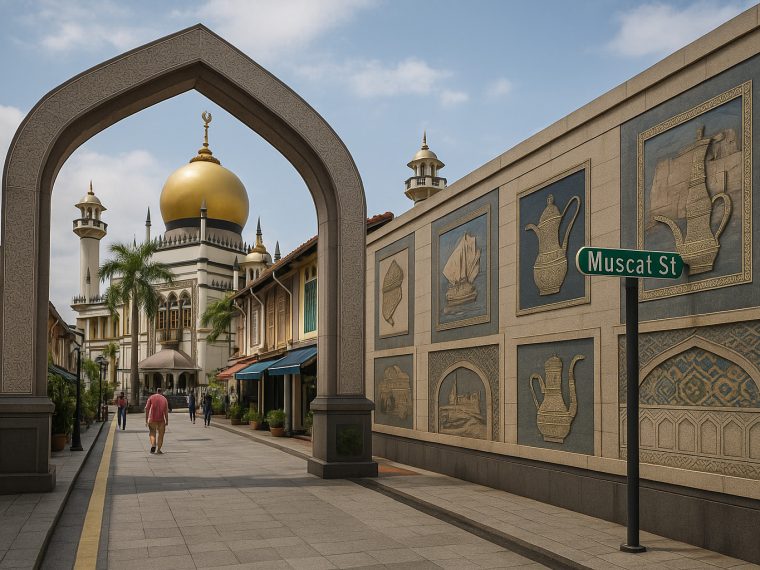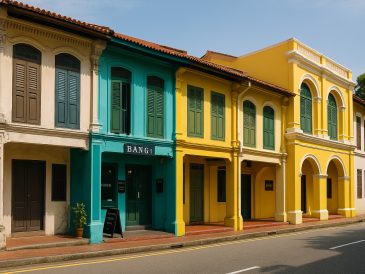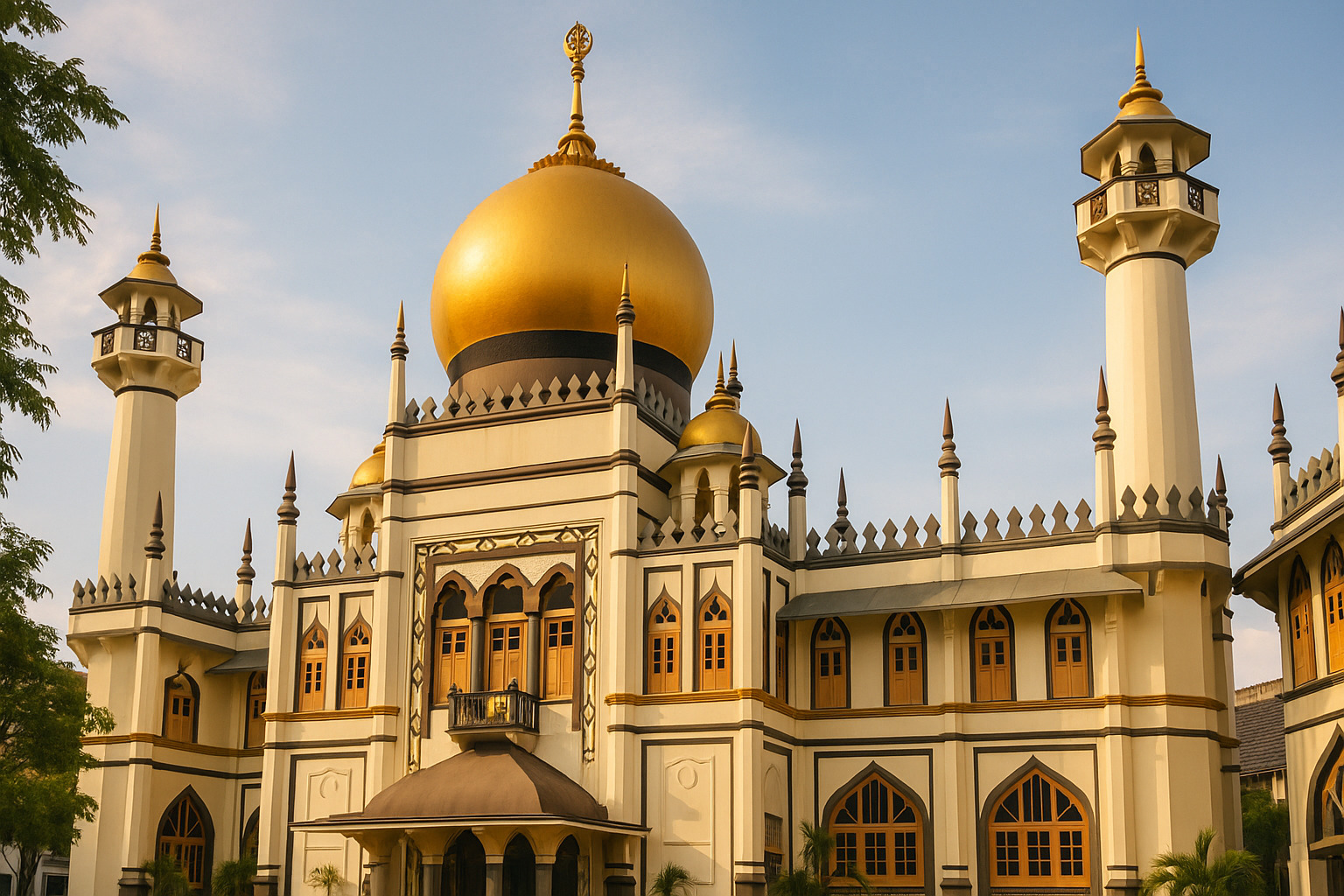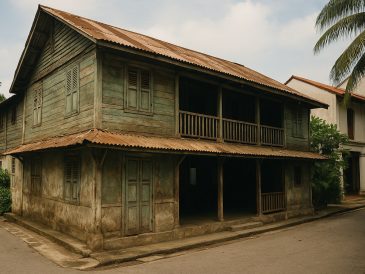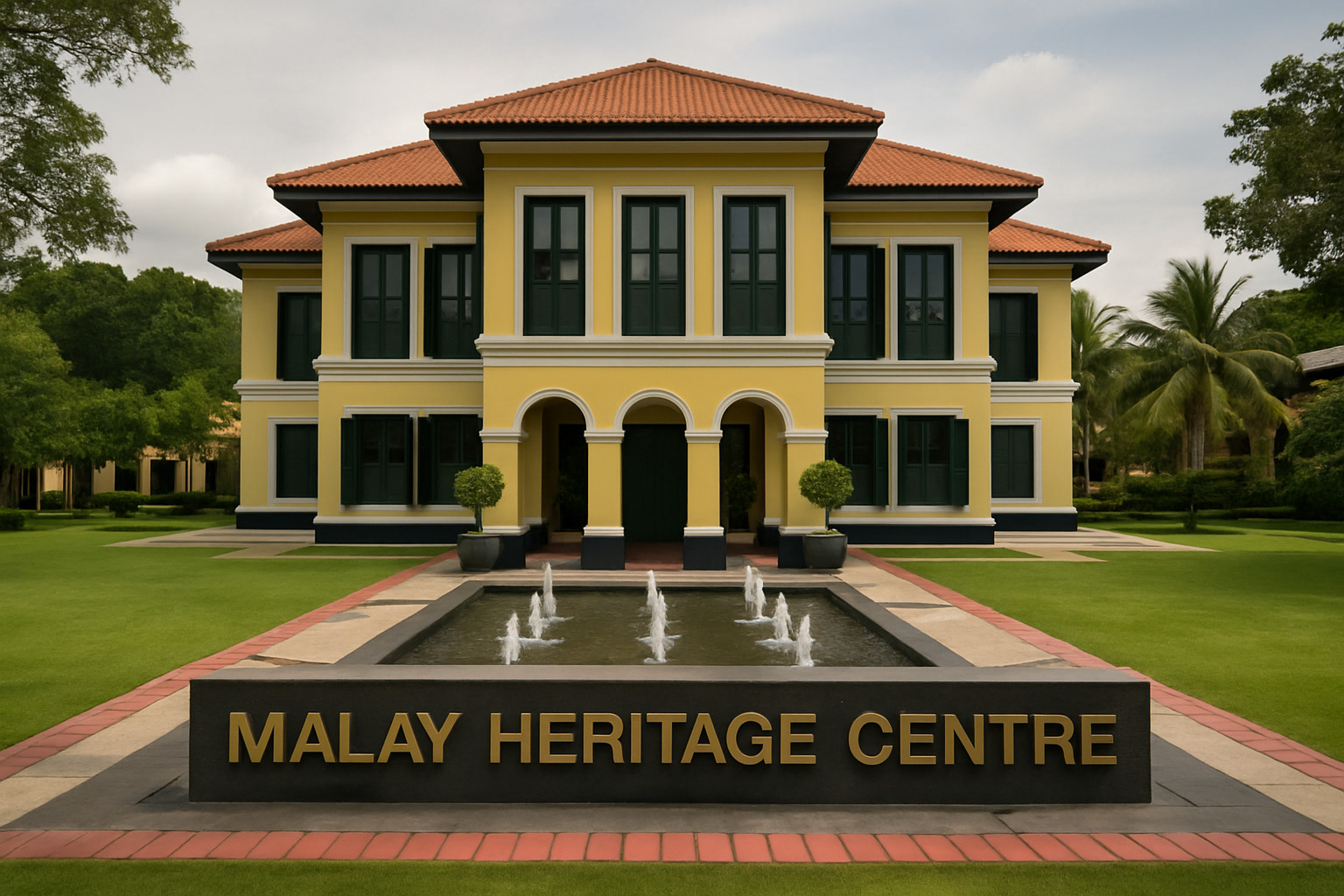Tucked within Singapore’s Kampong Gelam, Muscat Street may appear like any other narrow, unassuming road. But behind its granite arches and mosaic tiles lies a narrative shaped by centuries of trade, cultural exchange, and a bilateral partnership that turned an ordinary street into a living gallery of diplomacy.
This article traces how a street named after the capital of Oman transformed from a historic trade route into a stage for public art, global friendship, and urban heritage—an intersection where culture and foreign relations leave their imprint on the walls.
A Name With Global Roots
In 1909, Singapore named many of Kampong Gelam’s streets after significant cities in the Muslim world. Muscat Street, named after Oman’s capital, was one such tribute. But the connection between Kampong Gelam and the Middle East began long before the name appeared on maps.
Kampong Gelam served as a hub for Muslim traders, many of whom hailed from the Arabian Peninsula. Its proximity to the Sultan Mosque made it a hotspot for pilgrims and merchants who shaped the area’s spiritual and economic identity.
Muscat Street became more than a pathway leading to the mosque. It carried footsteps from faraway ports, hosted merchants trading textiles and spices, and held space for generations of worshippers attending Friday prayers. Trade and faith flowed freely through its narrow stretch.
Oman and Singapore: A Cultural Dialogue in Stone
Fast forward to 2012. The Urban Redevelopment Authority of Singapore and Muscat Municipality of Oman began a joint project to reshape Muscat Street as a tribute to bilateral friendship. The redevelopment wasn’t just a facelift—it was a curated collaboration that merged diplomacy with design.
On November 8, 2012, officials from both countries gathered to inaugurate the newly redesigned Muscat Street. Their presence wasn’t ceremonial alone; it reflected a relationship built on shared values and historical ties, now expressed through public space.
Key architectural elements introduced during this project include:
- Two 8-meter-tall granite arches: These monumental gateways mark both ends of the street and are carved with traditional Omani motifs.
- Imported mosaic tiles: Shipped directly from Oman, these tiles adorn the walls with symbols from Omani daily life and folklore.
- Granite murals and sculptures: From the khanjar (curved dagger) to the dallah (coffee pot), each artwork tells a story from Oman’s cultural catalogue.
The goal was not to replicate Oman but to introduce it as a visual companion to Singapore’s past. Muscat Street became a canvas that welcomed a foreign identity without displacing the local one.
The Jewel of Muscat: A Gift That Sailed Across Time
One of the street’s most symbolic features is a mural of the Jewel of Muscat, a replica of a 9th-century Arabian dhow. This isn’t just any ship—it was a state gift from Sultan Qaboos Bin Said Al Said to Singapore, intended to honor historical maritime ties.
The dhow was built without modern tools or nails, adhering to traditional 9th-century methods. Its journey in 2010 from Oman to Singapore retraced ancient trade routes that once connected the Gulf to Southeast Asia.
Today, the actual ship resides at the Maritime Experiential Museum. On Muscat Street, its story is told in pigment and tile, reminding passersby of shared oceanic history and revived friendships.
Street as Stage: Where Public Art Meets Public Memory
Muscat Street doesn’t exist in isolation. It feeds into the visual and historical dialogue already present in Kampong Gelam. During festivals and public events, the street lights up with performances, local cuisine, and crafts that blend Singaporean and Arab traditions.
This ongoing use of public space transforms the street into a kind of open-air cultural theater. Every corner hosts a detail—from Omani symbols carved in stone to locally inspired murals on nearby walls.
One such piece is by Singaporean artist Yip Yew Chong, painted at 92 Arab Street and visible from Muscat Street. It depicts Kampong Gelam’s transformation from a coastal village to a sacred stop for Muslim pilgrims. With brushstrokes that echo memory, it reinforces the area’s identity without needing museum walls.
Why Muscat Street Still Matters
Muscat Street today isn’t about nostalgia. It stands as proof that streets can carry layered meanings. It tells how diplomacy can exist beyond embassies and handshakes, how a street corner can become a chapter in international relations.
Here’s why Muscat Street continues to draw attention:
- Living Documentation: The street’s architecture and art serve as open historical records accessible to anyone.
- Urban Diplomacy: Few places manifest state-level diplomacy in such visible and walkable form.
- Community Relevance: Events held on Muscat Street reflect and celebrate Singapore’s multicultural ethos.
- Educational Value: Visitors—from school groups to tourists—gain insights into both local and foreign cultures by walking a few hundred meters.
Art and Diplomacy in Everyday Space
Muscat Street bridges more than geography. It threads the intentions of architects, governments, historians, and artists into a single, uninterrupted narrative. What might otherwise be forgotten—the traders, the ships, the gifts, the alliances—now exists permanently in public view.
Singapore’s collaboration with Oman did not result in a monument to be admired from afar. Instead, it produced a living, evolving street where a walk through history comes with carved granite, colorful tiles, and a faint echo of ocean winds.
